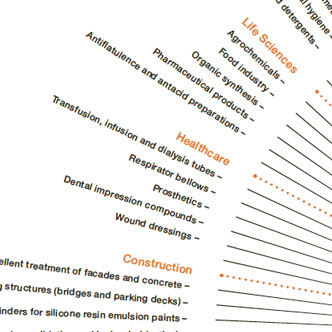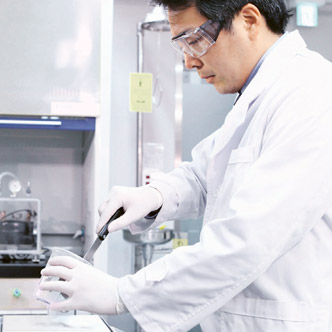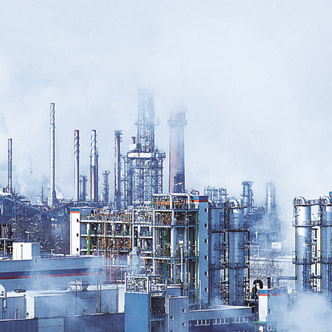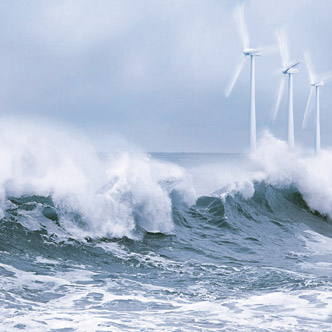Central Risk Areas
Defining the Probability and Impact of Risk Occurrence
We have defined categories for describing the probability that risks we identify will occur. They provide a framework for understanding our assessment of individual areas of risk. The categories define the range of probability as follows:
- Unlikely: under 25 percent
- Possible: 25 – 75 percent
- Likely: over 75 percent
We also use categories to describe how the occurrence of the risks listed might impact the Group’s earnings, net assets and financial position. We assess the possible effect on earnings using the net method, i. e. after taking appropriate countermeasures, such as establishing provisions or hedging. The following categories define the ranges:
- Low: up to €25 million
- Medium: up to €100 million
- High: over €100 million
The following table shows our estimation of the probability of risks and of how risk occurrence might impact the Group’s earnings, net assets and financial position. The statements refer to the forecast period, thus to fiscal 2017.
Probability and Possible Impact of Our Risks in 2017
|
||
Risk / Category |
Probability |
Possible Impact |
|
|
|
Overall economic risks |
Unlikely |
Medium |
Sales-market risks |
|
|
Chemicals |
Unlikely |
Medium |
Polysilicon |
Possible |
High |
Siltronic |
Possible |
Medium |
Procurement-market risks |
Possible |
Medium |
Market-trend risks |
Unlikely |
Low |
Investment risks |
Unlikely |
Low |
Production and environmental risks |
Unlikely |
Medium |
Financial risks |
|
|
Credit risks |
Unlikely |
Low |
Currency-exchange and interest-rate risks |
Possible |
Medium |
Liquidity risks |
Unlikely |
Low |
Pensions |
Possible |
Medium |
Legal risks |
Unlikely |
Low |
Regulatory risks |
|
|
Energy transition in Germany |
Possible |
Low |
Polysilicon trade restrictions |
Possible |
High |
New regulations for production processes and products |
Likely |
Low |
IT risks |
Unlikely |
Medium |
Personnel-related risks |
Unlikely |
Low |
External risks |
Unlikely |
Low |
Overall Economic Risks
Scenario: Economic slowdown.
Impact on WACKER: Production-capacity utilization drops, specific manufacturing costs rise, and the Group’s sales and earnings decline.
Measures: We counter this risk by continuously monitoring economic trends in our key sales markets. Should the economy start slowing, we take early precautions to adjust production capacities, resources and inventories flexibly to customer demand. In such a case, we concentrate capacity utilization on production locations with the best cost position, for example, and temporarily shut down some production facilities. To counter an economic slowdown, we also use the instrument of short-time work and do not extend temporary employment contracts.
Evaluation and Risk Assessment: Analysts expect global economic growth to continue in 2017. Risks to momentum stem from ongoing geopolitical crises and from increased political uncertainty in Europe and the USA. An unexpected slowdown in China could hamper global growth, as could possible turbulence on international financial markets.
Our chemical business supplies a large number of customers from a broad range of industrial sectors worldwide. This enables us, as experience has shown, to at least partially compensate for temporary weaknesses in some sectors and sales regions.
In our polysilicon business, future developments are determined by the regulatory framework for solar-power use and for international trade in photovoltaic systems and solar silicon. Additionally, the situation is influenced by economic trends.
In Siltronic’s semiconductor-wafer business, volume and price trends depend essentially on two factors. First: on the trend in consumer and industrial demand for electronic equipment – for example, computers, smartphones and tablet PC s. Second: on the balance between global production capacities and semiconductor-manufacturer demand. Both factors are closely interlinked.
We presently see no specific signs that economic trends will diverge substantially from the experts’ forecasts. Given the risks mentioned, however, we cannot completely rule out the possibility that the global economy in 2017 could fall short of current projections. Should the world economy prove weaker than currently forecast, this would have a medium impact on WACKER’s earnings.
Sales-Market Risks
Scenario 1: Chemical-segment overcapacity.
Impact on WACKER: Price and volume pressures on our products.
Measures: WACKER minimizes this risk in various ways. For example, we align production with demand and perform quantity controls to ensure appropriate plant-utilization rates. Our approach also includes structured price management, process optimization and intense development of growth markets. Importantly, a key ongoing goal is to increase the share of cyclically resilient product groups in our portfolio and to rank among the global leaders in all our business fields. By cooperating closely with customers, we aim to quickly open the way to novel applications, thus fostering long-term customer loyalty.
Evaluation and Risk Assessment: We expect overcapacity-related risks for our products to remain the same in 2017. At WACKER POLYMERS, we see overcapacity for dispersions and dispersible polymer powders in Asia. Nevertheless, we expect plant utilization to be strong despite this overcapacity. WACKER SILICONES faces overcapacity for siloxane production in China and for certain segments (such as liquid silicone rubber) – which could reduce plant utilization. Price pressure on some of our chemical divisions’ products will persist in 2017.
It is unlikely that individual areas of our chemical business will experience overcapacity and, consequently, price pressure. We have already taken account of this possibility in our planning and forecasts. Any potential impacts on Group earnings beyond that would be of medium scale.
Scenario 2: Polysilicon overcapacity and price risks, difficult market conditions due to a rollback of government incentive programs, the tight financial situation of many customers and the expiration of long-term supply contracts.
Impact on WACKER: There will be volume risks if excessive and hurried cuts to government solar incentives negatively impact the photovoltaic market. The expiration of long-term contracts increases the risk to capacity-utilization rates. Overcapacity could lead to intense price competition, exerting pressure on margins. Both factors could result in declining sales and earnings.
Measures: We counter these risks by continuously improving our cost positions and by optimizing our product and customer portfolio in line with market developments. We counter customers’ liquidity problems by demanding collateral.
Evaluation and Risk Assessment: In all probability, the consolidation process in the solar industry will continue in 2017. As long as this trend persists and global production capacities exceed market demand, polysilicon prices are likely to remain at their current low levels. Our planning and forecasts anticipate the continuation of this situation. Should solar-silicon demand clearly exceed supply, this would presumably benefit earnings at WACKER POLYSILICON. Conversely, a slump in demand for WACKER’s solar silicon would probably have a high impact on earnings in this business. We consider there to be a possible risk of falling prices.
Scenario 3: Cyclical fluctuations and intense competition on the semiconductor market.
Impact on WACKER: Volumes and prices decline.
Measures: Siltronic is reducing these risks by increasing flexibility in production operations and implementing systematic cost management. Siltronic aligns its own capacity with market trends and continuously improves the efficiency of production and business processes to optimize its cost basis.
Evaluation and Risk Assessment: Siltronic currently expects volumes in 2017 to be higher than last year. This scenario forms the basis for our planning and forecasts. We consider it possible that volumes and prices will diverge substantially from our expectations. If volumes came in considerably below our current estimates, this would have a medium impact on Siltronic’s earnings.
Procurement-Market Risks
Scenario: Higher raw-material and energy prices, bottlenecks in the supply of certain raw materials and customs risks.
Impact on WACKER: Earnings dampened by higher raw-material and energy prices. Any supply bottlenecks could lead to longer customer delivery times and volume losses.
Measures: On an annual basis – and if necessary, ad hoc – we prepare systematic procurement plans for strategic raw materials and energy, which also include an evaluation of the procurement risk. Whenever possible, we take corresponding measures to counter any procurement risks deemed significant. Examples of such measures include long-term supply contracts with partners, structured procurement from multiple suppliers under contracts with various maturities, expansion of our supplier base, and higher safety stocks. In select cases, we have also achieved partial backward integration and produce strategic raw materials ourselves. Our silicon-metal production site in Holla (Norway), for example, has substantially reduced our dependency on external suppliers.
Evaluation and Risk Assessment: WACKER has positioned itself in energy and raw-material procurement in such a way that we can effectively manage the risks inherent in both economic upturns and downturns. If the world economy weakens markedly, our contracts for key raw materials allow us to adjust our purchase volumes flexibly and to benefit – wherever possible – from price decreases through escalator clauses. If the world economy grows, we have volume guarantees. As a result, we do not see any major risks affecting the supply of our raw materials. Prices could, of course, markedly increase in such situations. But experience has shown that we would then have the possibility of at least partially compensating for these additional costs with higher selling prices for our own products. Prices for crude oil and coal are currently rising. If this trend should continue long term, our raw-material and energy costs could increase as a result.
WACKER uses a number of highly specialized raw materials for which there are only a few suppliers. If these suppliers were to cease deliveries, this could limit our production. We minimize this risk by taking appropriate measures (e. g. backup suppliers, safety stocks, change of products).
Under current legal provisions in Germany, energy-intensive companies or corporate units are required to pay only part of the EEG (Renewable Energy Act) levy. WACKER also profits from this exemption in certain sectors of the Group. Any restriction on the rules for exemption would considerably reduce the competitiveness of these individual corporate units. In general, the electricity price trend (wholesale prices, grid fees, capacity market) will continue to depend strongly on how German and European policy shapes the future development of the energy transition.
Overall, we currently consider it possible that raw-material and energy prices will continue to increase over the longer term. Should this happen, it would probably have a medium impact on the Group’s earnings trend.
Market-Trend Risks
Scenario: An incorrect projection of market trends, and lack of customer acceptance for newly developed products.
Impact on WACKER: Misjudgment of future market trends could impact our market strength and earnings position. New product developments that fail to meet market needs could negatively impact our sales and earnings.
Measures: WACKER works closely with its customers and, therefore, has reliable information for developing new products and applications. At the same time, we monitor the market and our competitors very closely, hold customer and supplier interviews, and regularly attend tradeshows that are important to WACKER. In individual cases, we commission market research. We minimize risks arising from our development work by carrying out certain projects together with customers. In R&D, WACKER cooperates with universities and scientific institutions with the aim of reflecting the latest trends in its technological and product-development activities.
Evaluation and Risk Assessment: WACKER has many years of market experience and can update its detailed planning as soon as market developments change. We consider the risk of misjudging market trends, or not reacting to them appropriately, to be low. If this should, nevertheless, occur in individual application fields, the impact on our earnings trend would probably be low.
Investment Risks
Scenario: Bad investments, higher-than-expected investment costs, postponed plant start-ups, deterioration of original market projections, and assumption of risks from investments in joint ventures and associates.
Impact on WACKER: Bad investments lead to idle-capacity expenses and /or impairments of assets and investments, which can have major effects on earnings. Higher investment costs mean higher cash outflows and, in the future, higher depreciation expenses in our operating result. Postponed start-ups expose us to the risk of being unable to fulfill supply contracts and, thus, of posting lower sales and earnings.
Measures: WACKER has numerous measures in place for countering investment risks. We check the completeness and plausibility of plans for new projects with an investment volume exceeding €3.0 million. The Group’s corporate departments are involved in this check. Economic feasibility is assessed using comparative studies that look at other plant projects, including those of competitors. Investments are approved in stages only. Intensive project-budget management helps prevent or minimize delays.
Evaluation and Risk Assessment: At our new site in Charleston, Tennessee (USA), we completed commissioning of production facilities on schedule during the reporting period. This marks the end of our capital-intensive investments in large-scale plants for upstream products. This year, and during the next three years, we will meet rising customer demand mainly through cost-effective expansions to existing plants and will strengthen our capacities for downstream products. Capital expenditures will be below depreciation in 2017. We currently consider the risk of investment spending exceeding our expectations to be low. Even if the risk did materialize, we would expect the impact on our earnings, net assets and financial position to be low.
Production and Environmental Risks
Scenario: Risks relating to the production, storage, filling and transport of raw materials, products and waste.
Impact on WACKER: Potential personal injury, property damage and environmental impairment; production downtimes and operational interruptions; and the obligation to pay damages.
Measures: WACKER coordinates its operational processes through its integrated management system (IMS). The system regulates workflows and responsibilities, attaching equal importance to productivity, quality, the environment, and health and safety. Our IMS is based on legal regulations, and on national and international standards, such as Responsible Care® and the Global Compact, which go far beyond legally prescribed standards. We monitor maintenance extensively and regularly perform inspections to ensure the highest possible level of operational safety at our production sites. We conduct thorough safety and risk analyses, from the design stage through to commissioning, to ensure our plants’ safety. We regularly hold seminars on plant and workplace safety and explosion protection. Every WACKER site has its emergency response plan to regulate cooperation between internal and external emergency response teams, and with the authorities. When we work with logistics providers, we ensure that hazardous-goods transport vehicles are always checked prior to loading. Any faults are systematically recorded and tracked.
Evaluation and Risk Assessment: Risks stemming from the production, storage, filling and transport of raw materials, products and waste can never be completely ruled out. Yet even though it is generally possible for such risks to materialize, we currently consider a serious loss event to be unlikely. Should such an event occur, though, it could have a medium impact on WACKER’s earnings.
Financial Risks
WACKER is exposed to financial risks from ongoing operations and financing. Such risks include credit, market-price, financing and liquidity risks. They are managed by the individual WACKER departments responsible for them. We employ primary and derivative financial instruments to cover and control the financial needs and risks necessitated by our operations. Such financial instruments are not permitted, however, unless they are based on actual or planned operational activities. The Notes to the Consolidated Financial Statements provide extensive information about risk hedging using derivative financial instruments.
Controlling Financial Risks
|
|
Risk |
Corporate Department Responsible |
|
|
Credit risks |
Corporate Finance and Insurance, Corporate Accounting and Tax |
Currency-exchange and interest-rate risks |
Corporate Finance and Insurance |
Liquidity risks |
Corporate Finance and Insurance |
Credit Risks
Scenario: Customers or business partners fail to meet their payment obligations.
Impact on WACKER: Losses on trade receivables, and failure of banks to fulfill their obligations to WACKER (loan disbursements, repayment of deposits and compensatory payments arising from derivatives transactions).
Measures: We use a variety of instruments to reduce the risk of any loss on receivables. Depending on the nature of the product or service provided and the amount involved, we may demand collateral, including retention of title. Other preventive measures range from references and credit checks to the evaluation of historical data from our business relationship to date (particularly payment behavior). We limit default risks by means of credit insurance, advance payments and bank guarantees. We prevent counterparty risk vis-à-vis banks and contractual partners by carefully selecting these partners. We conduct cash investments and derivative dealings with banks that usually have a minimum rating of A– from Standard & Poor’s or a comparable rating agency. Investment activities are additionally subject to maximum investment and term limits. In exceptional cases, investments or derivative dealings may be conducted with banks of lower creditworthiness within specified limits and terms.
Evaluation and Risk Assessment: We consider it unlikely that credit risks stemming from customer business will occur. We assume that our risk concentration with regard to bank failures is low, thanks to our approach to counterparty risk. If credit risks stemming from customer business or from a bank failure did unexpectedly occur, their impact on WACKER’s earnings would probably be low.
Currency-Exchange and Interest-Rate Risks
Scenario: Fluctuations in exchange rates and interest rates.
Impact on WACKER: Effect on earnings, liquidity, and financial investments and financial liabilities.
Measures: Currency risks primarily arise from exchange-rate fluctuations for receivables, liabilities, and cash and cash equivalents, and financial liabilities not held in euros. The currency risk is of particular importance with respect to the US dollar, Japanese yen, Singapore dollar and Chinese renminbi. WACKER hedges any net exposure above a certain level by using derivative financial instruments. The use of such instruments is governed by WACKER’s foreign exchange management directive. We work with forward-exchange contracts, foreign-exchange swaps and currency-option contracts. Foreign exchange hedging is carried out mainly for the US dollar, Japanese yen and Singapore dollar. We also counter exchange-rate risks through our non-eurozone production sites.
Interest-rate risks arise due to a change in market rates. Since it affects future interest payments for variable-rate loans and investments, such a change has a direct influence on the Group’s liquidity and financial assets. When exposure is identified, interest-rate hedging is performed. The use of derivative financial instruments is governed by internal regulations that separate trading and settlement functions, and is subject to strict controls within the entire processing procedure. We continually monitor the effectiveness of any measures taken.
Evaluation and Risk Assessment: We hedge part of our US dollar, yen and Singapore dollar business. The possible burden or income from exchange-rate fluctuations is partially cushioned by hedging measures. From today’s perspective, we consider it possible that exchange-rate and interest-rate changes in 2017 will substantially differ from our planning assumptions. We believe that this would have a medium impact on Group earnings.
Liquidity Risks
Scenario: Lack of funds for payments, and tougher access to credit markets.
Impact on WACKER: Higher financing costs, and modifications to further investment projects.
Measures: Liquidity risk is managed centrally at WACKER. Our Corporate Finance and Insurance department employs efficient systems for both cash management and rolling liquidity planning. In order to counter financing risks, WACKER holds adequate long-term, contractually agreed lines of credit, and has set aside sufficient liquidity. We invest liquid funds only in issuers or banks that have a credit rating within the sound investment-grade range. The investment of liquid funds is, moreover, subject to limits that we have defined. By means of cash pooling, liquid funds are passed on internally within the Group as required.
Evaluation and Risk Assessment: WACKER’s liquidity increased in 2016 compared with the previous year due to much lower investment spending. Liquidity totaled €465.7 million at the reporting date. At the same time, there were unused lines of credit with terms of over one year totaling some €800 million. We consider the occurrence of financing and liquidity risks to be unlikely. At the moment, we see no risks relating to financial-covenant infringements. If financial or liquidity bottlenecks did occur, their impact on Group earnings would be low. If unused lines of credit were tapped, net financial debt would rise.
Pensions
Scenario: Greater life expectancy of those entitled to a pension, pay and pension adjustments, falling discount factors, significant changes in the composition of the invested fund assets and capital-market interest rates (environment of low interest rates).
Impact on WACKER: A rise in pension obligations, a decline in plan assets, and a possible injection of financial resources into the pension fund or into the plan assets will affect the financial position and earnings of the Group. Over and above the pension plan, there are defined-benefit pension plans in the form of direct commitments. Additionally, employees have the option of converting part of their remuneration into direct benefit commitments. The greater life expectancy of pension-fund beneficiaries, adjustments to pay and pensions, and the discount factor (used in calculating the net present value of a final capital amount) also impact WACKER’s equity and earnings to a substantial degree.
Measures: A large portion of WACKER’s pension guarantees are covered by the Wacker Chemie VVaG pension fund, by pension-related funds and special-purpose assets, and by insurance plans. To ensure a sufficient rate of return and to limit investment risks, the fund diversifies its investment portfolio among various asset classes and regions. In managing its assets and liabilities, the pension fund controls and optimizes all asset items to attain the required return within specified risk limits. As one of the fund’s sponsoring entities, WACKER makes payments to it (when necessary), thereby ensuring sufficient coverage for pension obligations. We periodically adjust the calculation parameters of the other defined-benefit pension commitments (e. g. life expectancy).
Evaluation and Risk Assessment: Pension-fund beneficiaries are living longer, and capital-market interest rates have steadily declined in recent years. The rate of return will probably be insufficient to fulfill pension obligations in the long term. In 2016, our contribution rate remained unchanged. WACKER expects that it will have to make special payments to the Wacker Chemie VVaG pension fund in 2017. In this case, we would expect this to have a low impact on the WACKER Group’s cash flow. We consider it possible that we will have to make further payments to the pension fund and fund assets, and that pension expenses and payments will rise in the future. This would have a medium impact on WACKER’s earnings, net assets and financial position.
Legal Risks
Scenario: Diverse legal risks related to tax, trademarks, patents, competition, antitrust proceedings, the environment, labor and contracts could arise from our international business.
Impact on WACKER: Drawn-out legal disputes, which could impact our company’s operations, image and reputation, and which could be costly.
Measures: We limit legal risks with centralized contract management and legal review by our legal department. If necessary, we also seek highly qualified and specialized external legal advice.
Our Intellectual Property department protects and monitors patents, trademarks and licenses. Before initiating R&D projects, we conduct searches to determine whether existing third-party patents and intellectual property rights could prevent us from marketing any newly developed products, technologies or processes.
We limit risks arising from possible legal infringements by means of compliance programs. WACKER’s Code of Conduct defines and stipulates binding rules of behavior for all employees. Through training programs, WACKER enhances awareness of these issues and attempts to prevent reputation-related risks.
Evaluation and Risk Assessment: Due to the varied nature of our business activities in all major regions of the globe, the occurrence of legal risks is always conceivable in principle. We currently do not foresee any legal disputes, patent infringements or other legal risks that could significantly influence our business, but consider the occurrence of such risks as unlikely in principle. Should such an individual case occur, we would expect its impact on WACKER Group earnings to be low.
Regulatory Risks
Energy Transition in Germany
Scenario: The transition in Germany to 80 percent renewable energy in the electricity sector by 2050 (known as the “Energiewende” or energy transition) creates a regulatory environment that will probably be marked by constant legislative amendments in Berlin and Brussels (the German Renewable Energy Act, special compensation rules for energy-intensive companies, the grid charge, self-generated electricity, EU investigation into state aid procedures, state aid rules, the German Federal Government’s white paper, legislation on combined heat and power generation, and capacity mechanisms).
Impact on WACKER: Additional costs due to rising government levies on the cost of electricity procurement.
Measures: We continually monitor regulatory activity in Germany and in the EU. Whenever we anticipate changes in the current legal situation, we try to introduce our viewpoint into legislative procedures through discussions with policymakers and by participating in trade associations. In addition, we search for, and take advantage of, market opportunities arising from renewable energy (e. g. industrial demand-response management).
Evaluation and Risk Assessment: In 2016, the Bundestag approved an amendment of the German Renewable Energy Act and, at the start of 2017, this amendment came into force. Moreover, the German government and the EU Commission have reached agreement on the rules regarding self-generated electricity, combined heat and power plants, and sheddable loads. On the whole, these decisions do not cause any substantial increase in WACKER’s burden beyond the previous level. We consider it possible in principle that other legal provisions relating to energy policy, for example grid charges, might be amended in 2017. Such amendments, though, would likely have a low impact on WACKER’s earnings this year. We expect the regulatory environment surrounding the energy transition to remain in flux for the next few years.
Polysilicon Trade Restrictions
Scenario: Anti-dumping proceedings have been completed by the Chinese Ministry of Commerce against polysilicon imports from the USA. The anti-dumping proceedings of the EU against Chinese solar companies have been reviewed and extended. Until April 2017, sales of WACKER polysilicon in China comply with the terms of an amicable agreement reached with MOFCOM. The arrangements between WACKER and the Chinese government expire after that date, and China imposes stricter measures.
Impact on WACKER: Negative impact on the company’s earnings, net assets and financial position; influence on sales volumes; impact on long-term customer relations.
Measures: Our aim in numerous discussions with policymakers in the USA and China is to avoid punitive tariffs (US tariffs on Chinese solar modules and cells, and Chinese tariffs on polysilicon from the USA) and hence the imposition of such tariffs on WACKER’s US-made polysilicon. According to Chinese anti-dumping laws, we can also apply to have the tariffs individually reviewed and their level set. This is because WACKER did not, in fact, import any polysilicon from the USA to China during the investigation period of the anti-dumping proceedings. We will apply for a “New Shipper Review.” We are also trying to convince the Chinese government to withdraw, as of April 2017, measures directed against European polysilicon imports.
Evaluation and Risk Assessment: The tariffs on polysilicon imports from the USA to China will remain in effect until January 2019. From our point of view, it is not foreseeable whether these tariffs will be withdrawn or continued after January 2019. If, after concluding its ongoing investigations in March 2017, the European Union extends its trade restrictions on Chinese solar modules and the existing minimum-price agreement, we expect the Chinese authorities, on completion of their own investigations in April 2017, to extend their restrictions on polysilicon from Europe. In this case, we assume that our previous minimum-price agreement for polysilicon made in Europe and exported to China will continue unchanged. However, we cannot entirely rule out the risk for our German-made polysilicon of an adverse amendment to our minimum-price agreement with China if trade relations between the European Union and China were to worsen. Should this happen, we consider it possible that WACKER might be affected by trade barriers and punitive tariffs. In this instance, the impact on earnings in 2017 would probably be high.
New Regulations for Production Processes and Products
Scenario: The production and use of chemical substances will be more strictly regulated due to new legal regulations. New legal provisions necessitate changes in WACKER’s production processes.
Impact on WACKER: Additional investments in production facilities and revenue losses in individual application fields.
Measures: WACKER continually monitors the regulatory environment surrounding its products and production processes so that it can react promptly to impending changes. This is why we have begun to technologically enhance individual silicone production plants in preparation for possible regulatory changes.
Evaluation and Risk Assessment: It is always possible that new legal regulations will make it necessary to modify our product portfolio or production processes. We consider it likely that new legal provisions will require additional investment in our production facilities or changes to our product portfolio. Should such changes occur, the impact on WACKER’s earnings would be low, at most.
IT Risks
Scenario: Attacks, system errors and unauthorized access to IT systems and networks, threatening data security.
Impact on WACKER: Negative impact on the company’s earnings, net assets and financial position, on production processes and on workflows; loss of know-how.
Measures: We continually monitor our use of information technology and do everything we can to ensure that IT-supported business processes function reliably. Our IT-security and risk-management specialists are responsible for handling hazards in a cost-efficient way. Their work is based on standards such as ISO 27001. Using risk analyses, we define the requirements for all systems, including production-related ones, in terms of the availability, integrity and confidentiality of data. These requirements serve as a basis for taking measures. We check at regular intervals whether they have been implemented and complied with. We reach service level agreements (SLA s) with our business divisions, corporate departments and regional organizations, and continually monitor compliance with those agreements. For our central ERP systems (Enterprise Resource Planning), we set – and achieved – an availability goal of 99.5 percent for 2016. ERP is based on designing our systems for maximum availability, with an associated backup and recovery procedure. We have taken appropriate precautions to cover emergency situations (business continuity management).
We minimize project-related IT risks with the help of a uniform project and quality-management method. It ensures that changes are integrated into our system landscape in a controlled manner. Safety demands are identified and taken into consideration right from the planning stage. Before new IT solutions are rolled out, we ensure that development and security requirements have been observed. Systematic enterprise-architecture management reduces complexity and risks.
As part of the risk management process, we log and evaluate any operations-related risks that arise and initiate countermeasures. We also optimize IT service management processes on an ongoing basis. We use state-of-the-art hardware and software solutions to counter network downtime, data loss or manipulation, and unauthorized access to our network and systems. We use efficient software security programs to protect ourselves against malware. We have set up an international security team, which addresses problems involving data and system confidentiality, integrity and availability by means of organizational and technical measures and awareness and training programs. Information events and training on IT security ensure that our employees have the necessary skills to heighten information security at the company. In addition, we regularly conduct comprehensive safety reviews of the solutions and business partners used at domestic and international sites to prevent the risk of attacks on our information systems.
Evaluation and Risk Assessment: We can never completely rule out system errors and attacks on our IT systems and networks. The scope and variety of attack scenarios are on the rise worldwide. A long-term failure of IT systems or a major loss of data can considerably impair WACKER’s operations. Thanks to our precautionary measures, we consider the occurrence of such events to be unlikely. However, if one of our IT systems experienced downtime, a service disruption or a hacker attack affecting a significant number of users or lasting a longer period of time, there would be a medium impact on Group earnings.
Personnel-Related Risks
Scenario: Demographic change, lack of qualified technical and managerial employees, and problems in filling executive positions.
Impact on WACKER: A lack of technical and managerial employees could dampen our continued growth and cause us to lose of our technological edge.
Measures: We counter these risks through personnel-policy measures. These particularly include our Talent Management Process and the development plans derived from it. In addition, we offer a wide variety of training programs, good social benefits and performance-oriented compensation. We also offer our employees in Germany a wide range of working-time models and arrangements to better balance career demands with the different phases of life.
WACKER has a detailed, groupwide successor-planning process in place for all key positions in the company, including all positions held by executive personnel. For every upper management position, we observe up to three candidates to assess their potential and performance. In successor planning, WACKER distinguishes between short-term needs (up to two years) and medium-term needs (two to four years). In addition, WACKER has appointed deputies for executive personnel in the event of a lengthy absence or illness.
Evaluation and Risk Assessment: Demographic change will increase the risk of not being able to find sufficiently qualified personnel for technical and managerial positions in the medium to long term. For 2017, we consider the risks to our personnel needs to be low. Should these risks occur, the impact on Group earnings would probably be low.
External Risks
Scenario: Pandemic, natural disaster, war or civil war.
Impact on WACKER: Impairment of our entrepreneurial capacity to act, production downtimes, loss of trade receivables, impact on sales and earnings.
Measures: WACKER is a global operation with production facilities and technical centers in Europe, the Americas and Asia, and some 50 sales offices worldwide. Possible pandemics, natural disasters and acts of war in individual countries or regions where we are active represent a potential risk to our business and production operations, product sales and fixed assets and, therefore, to our earnings, net assets and financial position. Our managerial entities and our sites have worked out and publicized plans and measures to minimize the effects of a pandemic on the health of our employees and on our business processes. A standardized and coordinated approach is ensured by a pandemic preparedness plan. The financial impact of damage to our production plants due to natural disasters is partly covered by insurance. Since WACKER has production sites on various continents, we can ensure manufacturing and delivery capability to some degree even if individual plants should fail.
Evaluation and Risk Assessment: Risks from pandemics, natural disasters, and acts of war or civil war can never be ruled out entirely. In our view, it is unlikely that WACKER could be affected by risks from pandemics, natural disasters, and acts of war or civil war. Our preparedness plan and our internationally distributed production sites and sales offices help to limit the impact of local or regional damage on our business processes. As a result, we estimate that, even if such events occurred, the impact on WACKER’s earnings would be low.









